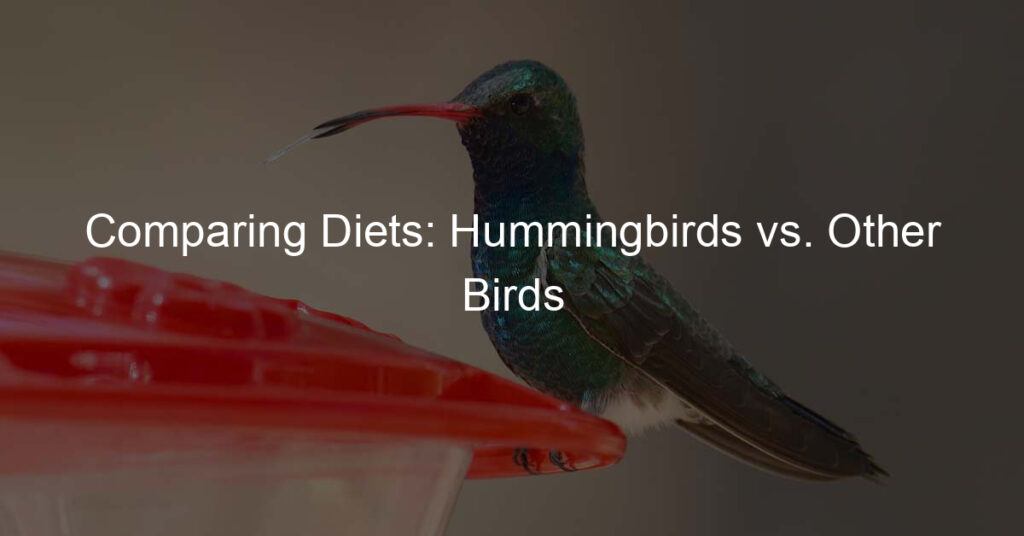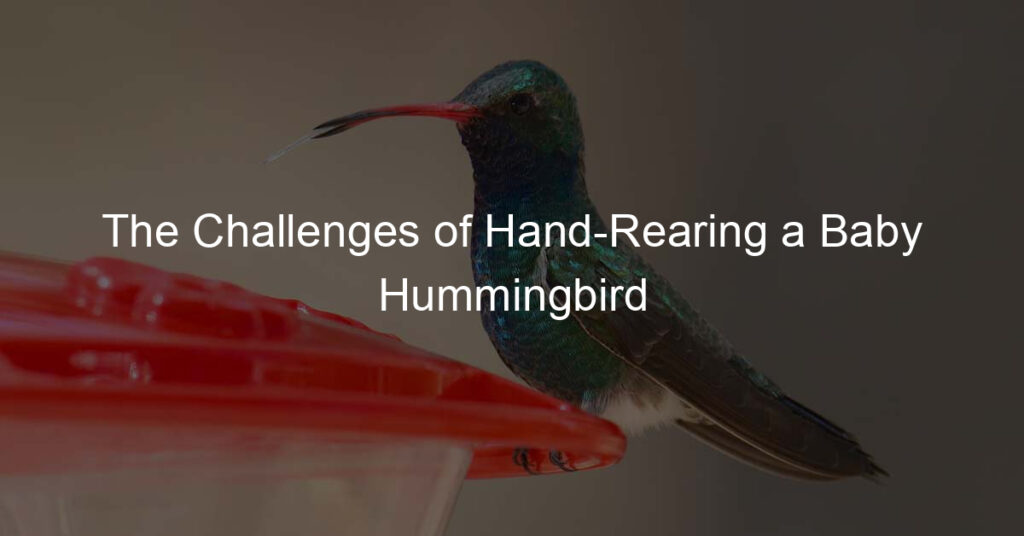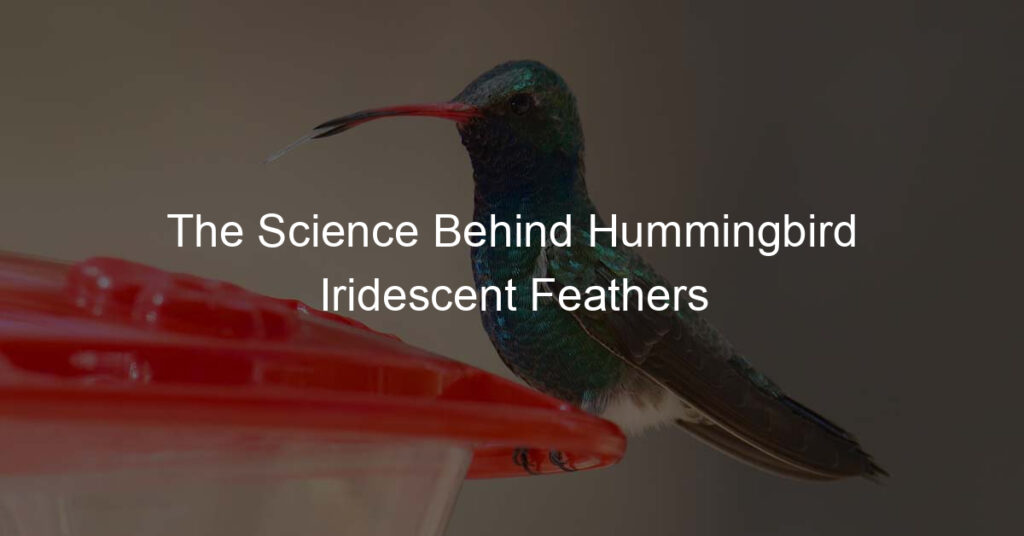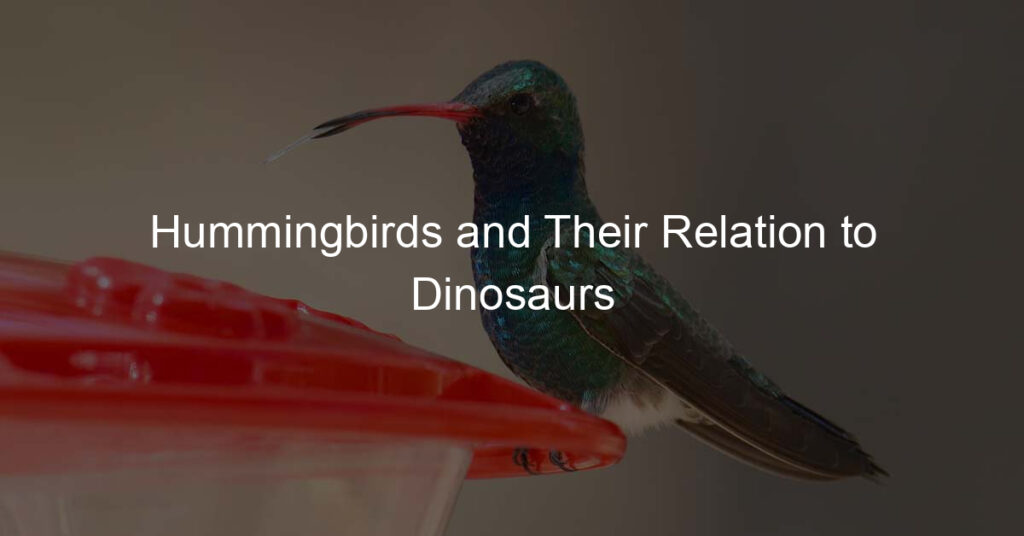This blogpost provides a detailed comparison between the diet of hummingbirds and other bird species. We delve into the unique dietary requirements of these fascinating creatures, exploring their high-energy intake, nectar consumption, and occasional insectivorous habits. We contrast these findings against the diet of other birds, examining variations based on species, habitat, and availability of food resources.
The High Energy Diet of Hummingbirds
Hummingbirds have one of the most unique and fascinating diets among birds. These tiny creatures have an incredibly high metabolism and require a constant supply of energy to fuel their active lifestyle. To meet their energy needs, hummingbirds have developed a specialized diet that consists primarily of nectar from flowers.
Nectar is a sugary liquid that is produced by plants to attract pollinators, such as hummingbirds. It is rich in carbohydrates, which provide a quick source of energy. Hummingbirds have long, thin beaks and tongues that are perfectly adapted for extracting nectar from deep within flowers. They can consume up to twice their body weight in nectar each day, which is equivalent to a human consuming hundreds of candy bars in a single day!
However, nectar alone is not enough to sustain hummingbirds. They also need protein and other nutrients to support their active lifestyle. To supplement their diet, hummingbirds also feed on small insects and spiders. These insects provide the necessary protein and nutrients that nectar lacks. Hummingbirds are agile and skilled hunters, capable of catching insects in mid-air or plucking them from spider webs.
It is truly remarkable how hummingbirds have evolved to thrive on such a high-energy diet. Their unique feeding adaptations, including their long beaks and tongues, allow them to efficiently extract nectar from flowers. Their ability to catch insects on the wing further enhances their diet and provides them with the necessary nutrients to survive.
Why are hummingbirds attracted to nectar?
Hummingbirds are highly attracted to nectar for several reasons. First and foremost, nectar is a rich source of energy, providing the sugars that hummingbirds need to fuel their high metabolism. The high sugar content in nectar allows hummingbirds to quickly replenish their energy stores and sustain their rapid wingbeats, which can reach up to 80 beats per second.
Additionally, nectar is easily digestible for hummingbirds. Their digestive systems are specifically adapted to break down the sugars in nectar efficiently. They have a fast digestive transit time, allowing them to process the nectar quickly and extract the maximum amount of energy from it.
The bright, vibrant colors of flowers also play a role in attracting hummingbirds to nectar. Hummingbirds have excellent color vision, and they are particularly attracted to red and orange hues. Flowers that produce nectar often have these vibrant colors as a visual cue to lure hummingbirds.
Furthermore, the shape of flowers is another factor that entices hummingbirds. Many flowers that are pollinated by hummingbirds have long tubular shapes that are perfectly suited for the birds' long beaks and tongues. The structure of these flowers ensures that only hummingbirds can access the nectar, increasing the chances of successful pollination.
Finally, the scent of flowers may also attract hummingbirds. While hummingbirds primarily rely on their visual cues, some studies suggest that certain fragrances emitted by flowers may also play a role in drawing hummingbirds to nectar sources. The combination of visual and olfactory signals creates a sensory experience that helps hummingbirds locate and feed on nectar-rich flowers.
The Role of Insects in a Hummingbird's Diet
In addition to nectar, insects play a crucial role in a hummingbird's diet. While nectar provides the necessary sugars for energy, insects are a vital source of protein and other essential nutrients. Hummingbirds rely on insects, such as small flies, mosquitoes, gnats, and spiders, to supplement their diet and meet their nutritional needs.
These tiny creatures provide an abundant source of protein, which is necessary for muscle development and maintenance. Protein also aids in feather growth and repair, ensuring that hummingbirds maintain their agility and aerodynamic capabilities. Insects also provide important vitamins and minerals that are essential for overall health and proper functioning of bodily systems.
Hummingbirds have developed specialized foraging techniques to capture insects. They are incredibly agile and can maneuver in mid-air with precision and speed. They use their long, thin beaks to snatch insects out of the air or from vegetation. They may also hover near flowers or foliage, waiting for insects to come within reach.
Interestingly, insect consumption by hummingbirds can vary depending on factors such as season and habitat. During the breeding season, when hummingbirds require more energy and protein for reproduction, they tend to increase their insect intake. Insects are particularly important for nourishing the growing young, as they provide the necessary nutrients for their development.
Insect availability also influences the proportion of insects in a hummingbird's diet. In areas where insects are abundant, hummingbirds may rely more heavily on them to meet their nutritional requirements. In contrast, in areas where insects are scarce, hummingbirds may rely more on nectar as their primary source of energy.
Seasonal Variations in Hummingbird's Diet
The diet of hummingbirds can undergo significant variations throughout the seasons, as their nutritional needs and food availability change. During the breeding season, which typically occurs in the spring and summer, hummingbirds require a high-energy diet to support their reproductive activities. Nectar from flowers becomes a primary food source during this time, as it provides the necessary sugars for energy. The vibrant and blooming flowers offer an abundant supply of nectar, attracting hummingbirds to feed on their sweet reward.
As the seasons transition into fall and winter, the availability of nectar-producing flowers decreases. This scarcity of nectar prompts hummingbirds to adapt their diet to alternative food sources. They rely on other natural sources of sugar, such as tree sap and fruit juices, to sustain their energy levels. Additionally, some species of hummingbirds may consume small amounts of pollen and even tree resin for additional nutrients.
The shift in diet also includes an increased dependence on insects. During the colder months, insects may become more accessible and serve as an important source of protein for hummingbirds. They actively search for insects in trees, shrubs, and even spider webs, honing in on these valuable sources of nutrition.
Migration further influences the seasonal variations in a hummingbird's diet. Some species of hummingbirds embark on long migratory journeys to warmer climates during the winter months. Along their migration routes, they rely on nectar-producing flowers and feeders maintained by humans. These pitstops provide crucial refueling stations for hummingbirds, ensuring they have enough energy to continue their journey.
Comparing Diets: Hummingbirds vs. Sparrows
Hummingbirds and sparrows have distinctly different diets due to their varying physiological and behavioral adaptations. Hummingbirds, with their rapid wing beats and hovering abilities, have evolved to feed primarily on nectar-rich flowers. Their long, slender beaks allow them to reach deep into flowers to access the sweet nectar. This high-energy diet is necessary to fuel their rapid metabolism and constant activity.
In contrast, sparrows are seed-eating birds that primarily rely on grains, seeds, and small insects for sustenance. Their short, conical beaks are well-suited for cracking open seeds and extracting the nutritious contents. Sparrows are often found foraging on the ground or in low vegetation, searching for seeds and insects to meet their dietary needs.
While hummingbirds are known for their nectar consumption, they also supplement their diet with small insects. Insects provide an important source of protein, essential for their growth, development, and reproduction. Hummingbirds catch insects in mid-air or glean them from leaves and spider webs, displaying their agility and precision in capturing these tiny morsels.
On the other hand, sparrows rely heavily on grains and seeds as their primary food source. They have the ability to digest and extract nutrients from seeds that other birds may find difficult to access. Their diet also includes small insects, which provide additional protein and nutritional diversity.
Is the Seagull's Diet Similar to the Hummingbird's?
Seagulls and hummingbirds have drastically different diets due to their distinct habitats and feeding behaviors. Seagulls are opportunistic scavengers and predators, often found near bodies of water such as coastlines and lakeshores. They have a diverse diet that includes fish, crustaceans, mollusks, small mammals, and even garbage from human settlements. Seagulls are known for their ability to snatch food from the surface of the water or steal from other birds.
In contrast, hummingbirds have a specialized diet that revolves around nectar and insects. They are primarily found in forests and gardens, where they seek out flowers with high nectar content. Hummingbirds use their long, slender beaks to access the sweet nectar deep within the flower's petals. They also catch small insects in mid-air or pluck them from leaves and spider webs to supplement their protein intake.
The differences in diet between seagulls and hummingbirds can be attributed to their distinct ecological niches. Seagulls are adapted to coastal and marine environments, where food sources such as fish and invertebrates are abundant. Their scavenging behavior allows them to take advantage of various food opportunities, including human waste. In contrast, hummingbirds have evolved to exploit the rich nectar resources offered by flowering plants, which are often abundant in forested areas.
Moreover, seagulls and hummingbirds have different feeding behaviors. Seagulls are larger birds with strong beaks, which enable them to capture and consume larger prey. They are also capable of swallowing food whole or breaking it into smaller pieces. Hummingbirds, with their small size and delicate beaks, are specialized in sipping nectar from flowers and catching small, agile insects in flight.
"Birds of a feather flock together" – Comparing Diets of Hummingbirds and Parrots
Birds of a feather flock together, and this saying holds true when comparing the diets of hummingbirds and parrots. Both birds belong to the order of Psittaciformes, which includes over 393 species of parrots, parakeets, and cockatoos. Despite their similarities, there are notable differences in their dietary preferences and adaptations.
Hummingbirds predominantly feed on nectar and insects, while parrots have a broader diet that includes fruits, seeds, nuts, and even small invertebrates. Parrots have powerful beaks that allow them to crack open tough shells and extract the nutritious contents inside, such as nuts and seeds. Their diet is primarily plant-based, with a particular affinity for fruits and berries.
In contrast, hummingbirds have a specialized adaptation for feeding on nectar. Their long, slender beaks and extendable tongues are perfectly suited for reaching deep into the corolla of flowers and extracting the sugary nectar. Nectar serves as their primary source of energy, providing the high sugar content they need to fuel their rapid wingbeats.
While parrots and hummingbirds have different dietary preferences, they both play important ecological roles. Hummingbirds are excellent pollinators, as their long beaks often come into contact with the reproductive organs of flowers, facilitating cross-pollination. Parrots, on the other hand, play a crucial role in seed dispersal. As they consume fruits and seeds, they inadvertently transport seeds to new locations through their droppings, aiding in the dispersal and germination of plants.
What do eagles eat? A Contrast with Hummingbirds
Eagles and hummingbirds are two fascinating bird species that exhibit stark differences in their diets. While hummingbirds primarily rely on nectar and insects, eagles have a much broader and carnivorous diet. Eagles are apex predators, sitting at the top of the food chain, and their diet reflects their predatory nature. They feed on a variety of prey, including fish, small mammals, birds, reptiles, and even carrion.
The Impact of Habitat on Bird Diets
The habitat in which birds reside plays a significant role in shaping their diets. Different habitats offer varying food resources, influencing the types of prey available for birds to consume. For example, birds that inhabit dense forests often have diets consisting of insects, berries, and seeds found within the forest canopy. On the other hand, birds that reside near bodies of water, such as lakes or rivers, have access to a wide range of aquatic prey, including fish and aquatic invertebrates.
Similarly, coastal habitats provide a unique food source for birds. They offer a rich supply of marine life, including fish, shellfish, and crustaceans, which attract various bird species such as gulls, terns, and pelicans. These birds have adapted their diets to take advantage of the abundant resources found in coastal areas.
In arid or desert environments, where food resources may be scarce, birds have adapted to survive on limited vegetation or seeds. They have evolved specialized beaks and digestive systems that allow them to efficiently extract nutrients from these dry food sources. Examples of such birds include finches and sparrows that are commonly found in desert regions.
The impact of habitat on bird diets extends beyond the availability of food resources. It also influences the foraging behaviors and feeding strategies adopted by different bird species. For instance, birds that inhabit open grasslands often rely on their keen eyesight to spot and capture prey on the ground, while birds in forested habitats may utilize their agility and maneuverability to catch insects mid-flight.
Do Birds Adapt Their Diets Based on Food Availability?
Birds are highly adaptable creatures, and they have the ability to adjust their diets based on the availability of food resources. This adaptability ensures their survival in changing environments and fluctuating food supplies. Let's explore how birds adapt their diets to meet their nutritional needs under different circumstances.
- 1. Seasonal Changes:
Birds often encounter variations in food availability throughout the year due to changing seasons. In response to these fluctuations, they adjust their diets accordingly. For example, during the breeding season, when the demand for high-quality protein increases, birds may shift their diet to include more insects and other protein-rich prey. In contrast, during winter when insects are scarce, birds may rely more on seeds, berries, and other plant matter to sustain themselves. - 2. Migration:
Migration is another factor that influences bird diets. When birds embark on long-distance journeys, they may encounter different food resources along their migration routes. This prompts them to adapt their diets to take advantage of the available food sources. For instance, shorebirds that migrate between the Arctic tundra and coastal areas may switch from a diet primarily consisting of insects and berries in their breeding grounds to a diet rich in marine invertebrates and fish during their wintering grounds. - 3. Competition and Resource Availability:
Birds may also adapt their diets based on the competition for food resources within their habitats. If a particular food source becomes scarce due to high demand or competition from other species, birds may seek alternative food options to avoid starvation. This flexibility allows them to exploit less crowded niches and find alternative sources of nutrition.
How Do Migratory Patterns Influence Bird Diets?
Migratory patterns have a significant influence on the diets of birds. As birds undertake long-distance migrations, they encounter different environments and face varying food availability along their journey. This prompts them to adapt their diets to meet their energy requirements and survive the arduous journey. Here are three ways in which migratory patterns influence bird diets:
- 1. Seasonal Changes in Food Availability:
During migration, birds often travel across vast distances, crossing different regions and habitats. As they move from one area to another, they encounter changes in food availability due to seasonal variations. For example, certain insect populations may peak in one region during the summer months, providing a plentiful food source for migrating birds. In contrast, during the winter months, when birds may travel to warmer climates, they may rely more on fruits, nectar, or seeds as their primary food sources. - 2. Adaptation to Stopover Sites:
During migration, birds make stopovers at specific sites to rest and refuel before continuing their journey. These stopover sites are crucial for birds to replenish their energy reserves. The availability of food resources at these sites strongly influences the bird's diet. Some stopover sites are rich in insects, providing migrating birds with a protein-rich food source to fuel their flight. Other stopover sites may have abundant nectar-producing plants, attracting birds that rely on nectar as their main source of energy. - 3. Shifts in Prey Preferences:
Birds that migrate may also alter their prey preferences based on the resources available along their migratory route. For example, a bird that primarily feeds on fish in its breeding grounds may shift its diet to include more insects or berries as it migrates through different habitats. This flexibility in prey preferences allows migrating birds to adapt to changing food availability and ensure they can meet their nutritional needs throughout their journey.
Understanding the Complexities of Bird Diets
Bird diets are incredibly diverse and complex, varying greatly among different species. While some birds have specific dietary preferences, others exhibit more flexibility and adaptability in their feeding habits. It is important to recognize that birds have evolved over time to occupy distinct ecological niches, resulting in unique dietary requirements.
Birds have developed specialized beaks and digestive systems that allow them to consume a wide range of food sources. For example, woodpeckers have long, sturdy beaks that enable them to drill into trees to feed on insects and extract sap. In contrast, birds like herons and kingfishers have sharp, pointed beaks that are adapted for capturing fish in aquatic environments.
Another fascinating aspect of bird diets is their ability to consume unconventional food items. Some birds, such as crows and seagulls, are known to scavenge and feed on carrion. They have adapted to take advantage of available food sources, even if it means consuming decaying matter. This adaptability is crucial for their survival, especially in environments where food may be scarce.
Birds also display dietary variations based on their life stages. For example, during the breeding season, many bird species require higher protein intake to support egg development and chick rearing. They may shift their diets to include more insects or other protein-rich food sources during this critical period.
Furthermore, bird diets can be influenced by factors like migration patterns and seasonal changes. Some birds undertake long-distance migrations, and their diets may shift along their journey to accommodate the different food resources available at various locations. Additionally, seasonal changes in food availability, such as the abundance of fruits or insects, can impact bird diets, leading to adaptations and adjustments in feeding behavior.
In summary, the dietary habits of hummingbirds are significantly different from those of other birds. Their high-energy requirements and dependence on nectars make them specialized feeders. However, like other birds, they too possess the flexibility to adapt their diet as per the changing seasons and availability of food resources. The study of bird diets not only adds to our understanding of avian species but also sheds light on the intricacies of nature and food chains.






